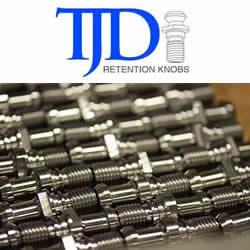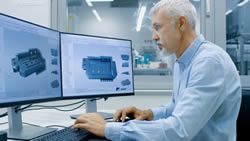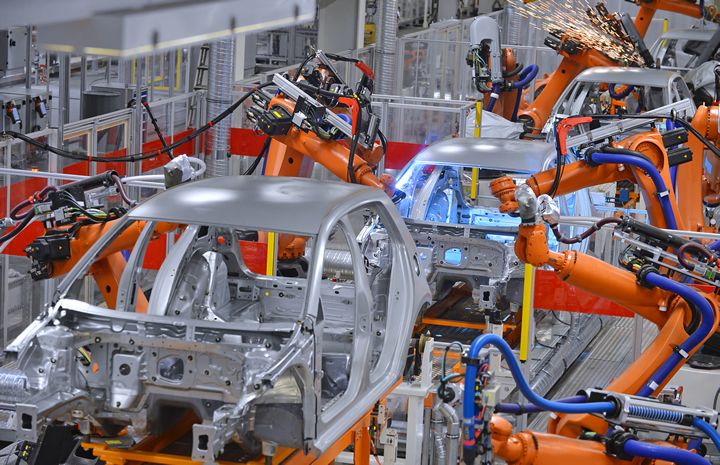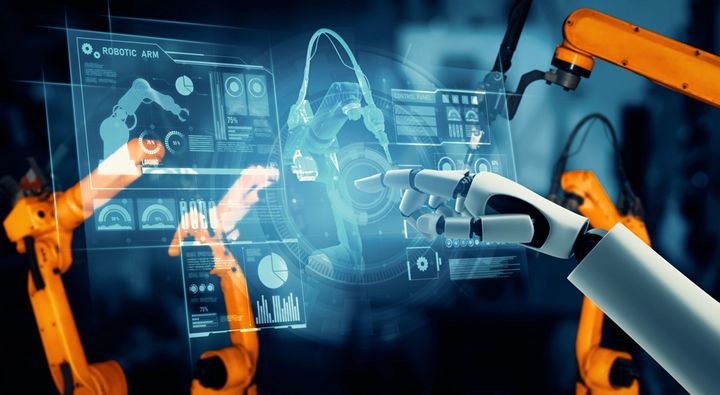Manufacturing and Automation - Articles, Stories & Interviews
The Evolution of Mass Custom Manufacturing: Why the Industry Needs a High-Velocity Shift
HVMC is not just faster production but a fundamental reimagining of how custom manufacturing operates. By standardizing and automating processes without sacrificing the ability to tailor products to specific needs, HVMC has the potential to transform the landscape.
The Reshoring Revolution: Navigating New Policies For A Manufacturing Renaissance
As President Trump's second term unfolds, the manufacturing landscape in the United States is poised for a significant transformation. The administration's renewed focus on reshoring manufacturing operations presents both opportunities and challenges for industry leaders.
Penn Waste Inc. Minimizes Machine Downtime and Improves Efficiency
Penn Waste realized that it needed an advanced wireless solution combined with smart sensors that would deliver accurate, reliable and continuous real-time data for predictive maintenance.
Updates on Technology in Engineering: Digital Twins and AI Reshaping Product Development
Industry leaders like Dassault Systemes, Siemens, PTC, and Omnix International are pushing the boundaries of virtual twin experiences, AI-driven development, and immersive digital environments. Here is a look at some of the exciting updates in digital twins and engineering
When Machines Teach Machines: AI and ML in Remote Condition Monitoring
The challenge isn’t just about maintaining quality; it’s about doing so at scale. With skyrocketing volumes of data, a shrinking workforce, and rising costs, companies are looking for smarter solutions. That’s where AI and ML come in.
Control System Migrations | Part 5 | Training
In part five of our control system migrations series, we explore the primary considerations for training during a system migration, addressing the different needs of various roles, the significance of simulation, location strategies, and optimal timing.
BOM Management Expert Guide for Growing Manufacturers
Properly managing your bills of materials can help you streamline production processes, improve material planning, and reduce costs.
Manufacturing and Automation - Featured Stories
What is the 2:1 Ratio For Linear Plain Bearings?

The 2:1 Ratio represents the maximum allowable moment arm distance relative to bearing length without causing binding or motion restriction, ensuring optimal performance in plain linear bearings.
Unleashing the power of gen AI in manufacturing
.jpg)
While Gen AI is taking off across numerous organizations and industries, some sectors have been slower to get on board. Traditional manufacturing is behind the Gen AI curve as disparate data and lack of digitization are creating obstacles on this transformation journey.
Optimizing Your IT Ecosystem: Is It Time for a Tech Stack Audit?
.jpg)
A tech audit can serve as a diagnostic tool, flagging vulnerabilities within your packaging company’s IT infrastructure before they impact the health of your business.
Manufacturing and Automation - News Headlines
PACK EXPO Las Vegas 2025: The Premier Packaging & Processing Event Returns - Registration Now Open!
Join 35,000 industry professionals from 40+ markets to explore cutting-edge innovations, network with leaders, and gain exclusive industry insights-all in one place.
CADDi Unveils CADDi Quote, Transforming Manufacturing Procurement
The new tool expands the company's AI-driven data platform, reinforcing its leadership in manufacturing technology
Stratasys Partners with trinckle 3D in Exclusive Software Agreement to Automate Fixture Design
Integration of fixturemate into GrabCAD Print Pro simplifies custom fixture creation, cutting lead times and costs for manufacturers
Manifest Technologies Unveils World's First Parallax Volumetric Additive Manufacturing Evaluation Kit at RAPID 2025
Forget Layers. Meet Parallax VAM from Manifest, a completely new additive technology forming complete parts instantly with precision-controlled light.
From concept to completion: How digital twins impact the entire product lifecycle
If you've ever wondered how sci-fi has predicted the future of engineering, Star Trek's 'holo-deck' might come to mind - a virtual, replicated world where you could test any scenario before making it reality. Sound familiar? Enter digital twins. Here, Reinfried Kößlbacher, Area Sales Manager at industrial automation supplier COPA-DATA CEE/ME, examines how digital twins are revolutionizing industry by enabling real-time simulation, optimization and predictive analytics.
Manufacturing and Automation - Featured Product

T.J. Davies' Retention Knobs
Our retention knobs are manufactured above international standards or to machine builder specifications. Retention knobs are manufactured utilizing AMS-6274/AISI-8620 alloy steel drawn in the United States. Threads are single-pointed on our lathes while manufacturing all other retention knob features to ensure high concentricity. Our process ensures that our threads are balanced (lead in/lead out at 180 degrees.) Each retention knob is carburized (hardened) to 58-62HRC, and case depth is .020-.030. Core hardness 40HRC. Each retention knob is coated utilizing a hot black oxide coating to military specifications. Our retention knobs are 100% covered in black oxide to prevent rust. All retention knob surfaces (not just mating surfaces) have a precision finish of 32 RMA micro or better: ISO grade 6N. Each retention knob is magnetic particle tested and tested at 2.5 times the pulling force of the drawbar. Certifications are maintained for each step in the manufacturing process for traceability.
Manufacturing and Automation - Featured Company

Manufacturing Extension Partnership (MEP)
The Manufacturing Extension Partnership Program (MEP) is a national network with hundreds of specialists who understand the needs of America's small manufacturers. Our national network consists of manufacturing extension partnership centers located in all 50 states and Puerto Rico. MEP provides companies with services and access to public and private resources to enhance growth, improve productivity, reduce costs, and expand capacity.



.jpg)




